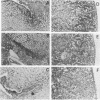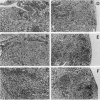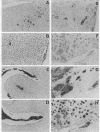Abstract
Mixed urinary tract infection was caused by simultaneous inoculation of 10(4) CFU each of Enterococcus faecalis TN2005 and Pseudomonas aeruginosa P9 into the bladders of CBA/J mice. Both organisms proliferated in the kidneys, and viable cell counts of E. faecalis TN2005 reached a peak level of 4.1 x 10(5) CFU per pair of kidneys within the first 24 h, while P. aeruginosa P9 counts increased more slowly. The number of P. aeruginosa P9 cells peaked at 8.3 x 10(6) CFU per pair of kidneys 5 days after infection. Five days after mixed infection, infiltration of neutrophils into the renal pelvis and renal medulla was observed. Immunohistochemical staining revealed the presence of E. faecalis antigen in the renal medulla. P. aeruginosa antigen was detected mainly in the renal pelvis 5 days after infection and in the renal medulla as well as the renal pelvis 14 days after infection. Mixed infection induced pyelonephritis within 5 days after mixed infection, while it was not observed until 14 days after infection with P. aeruginosa P9 alone. P. aeruginosa P9 inoculated together with E. faecalis TN2005 was more resistant to eradication from the kidneys by beta-lactam antibiotics than P. aeruginosa P9 inoculated alone. These results suggest that E. faecalis TN2005 invades the renal medulla first in mixed urinary tract infection and induces histological changes which lead to aggravation of the pyelonephritis caused by P. aeruginosa P9.
Full text
PDF
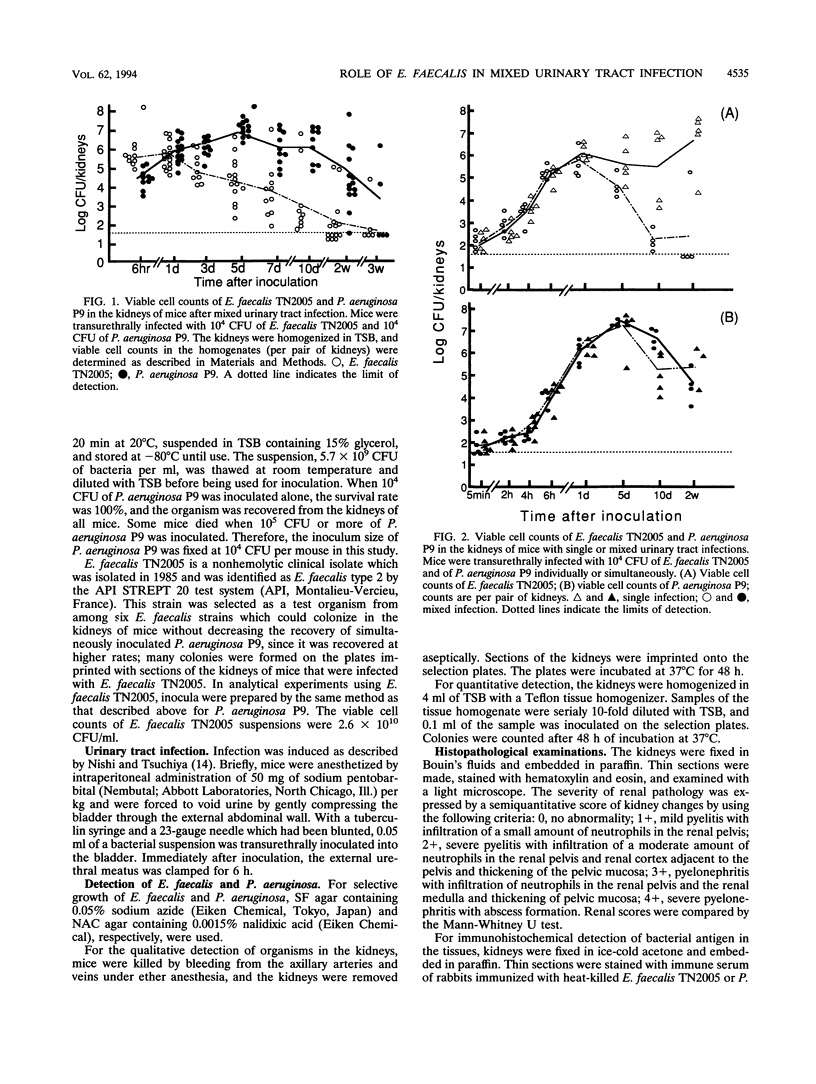
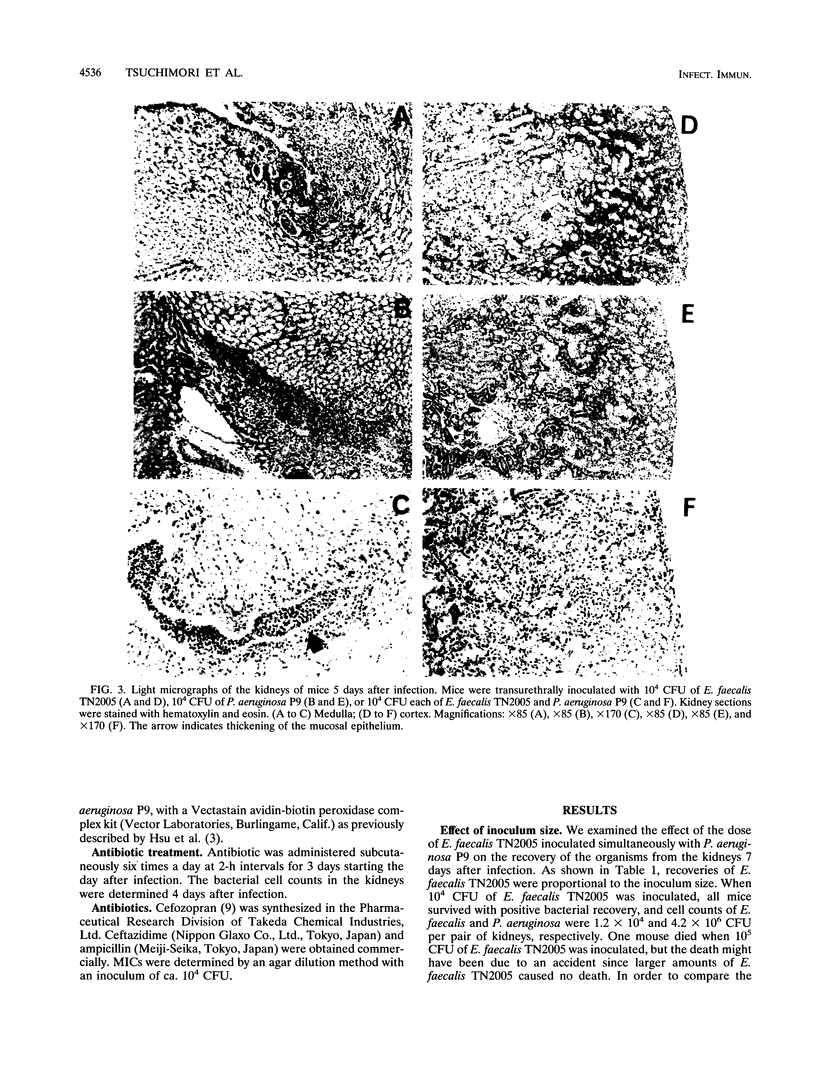
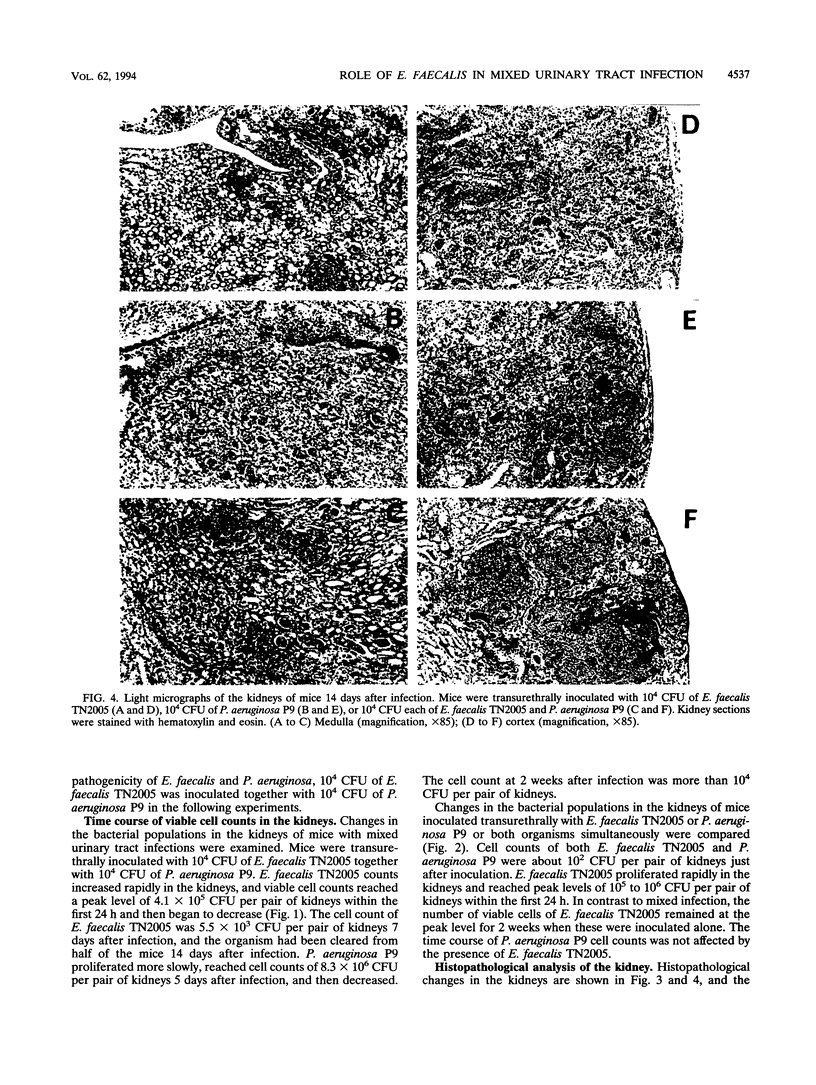
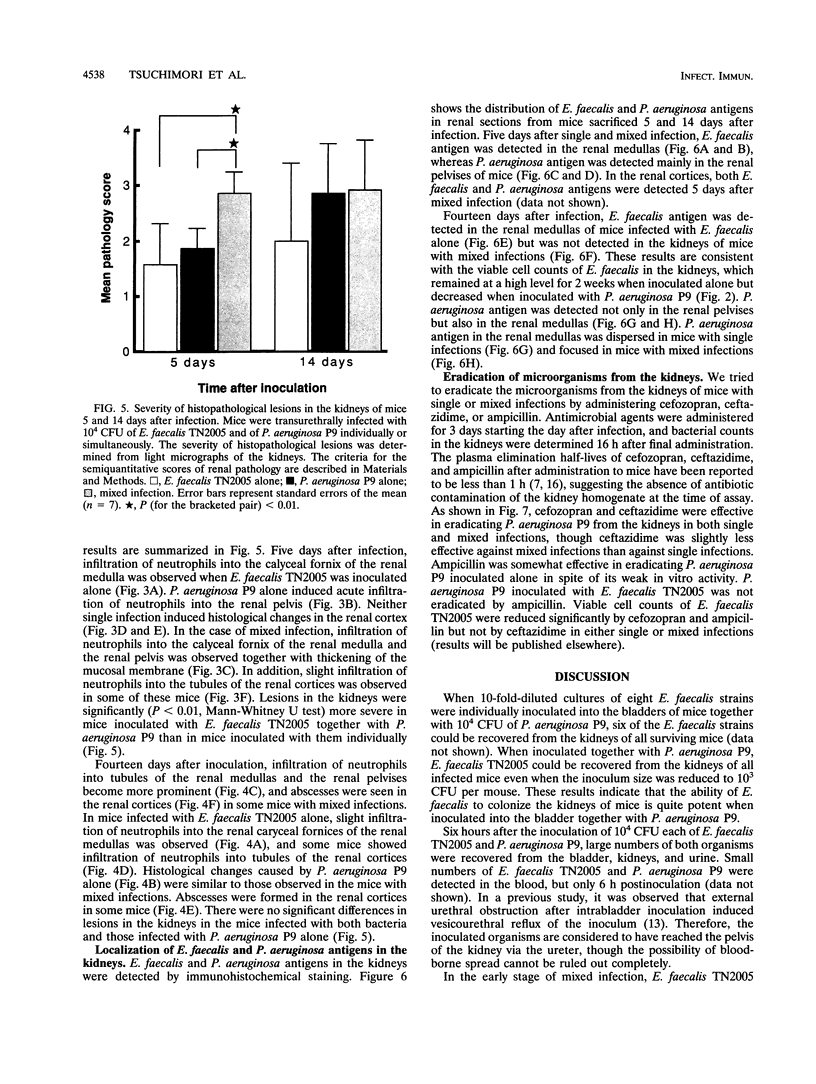
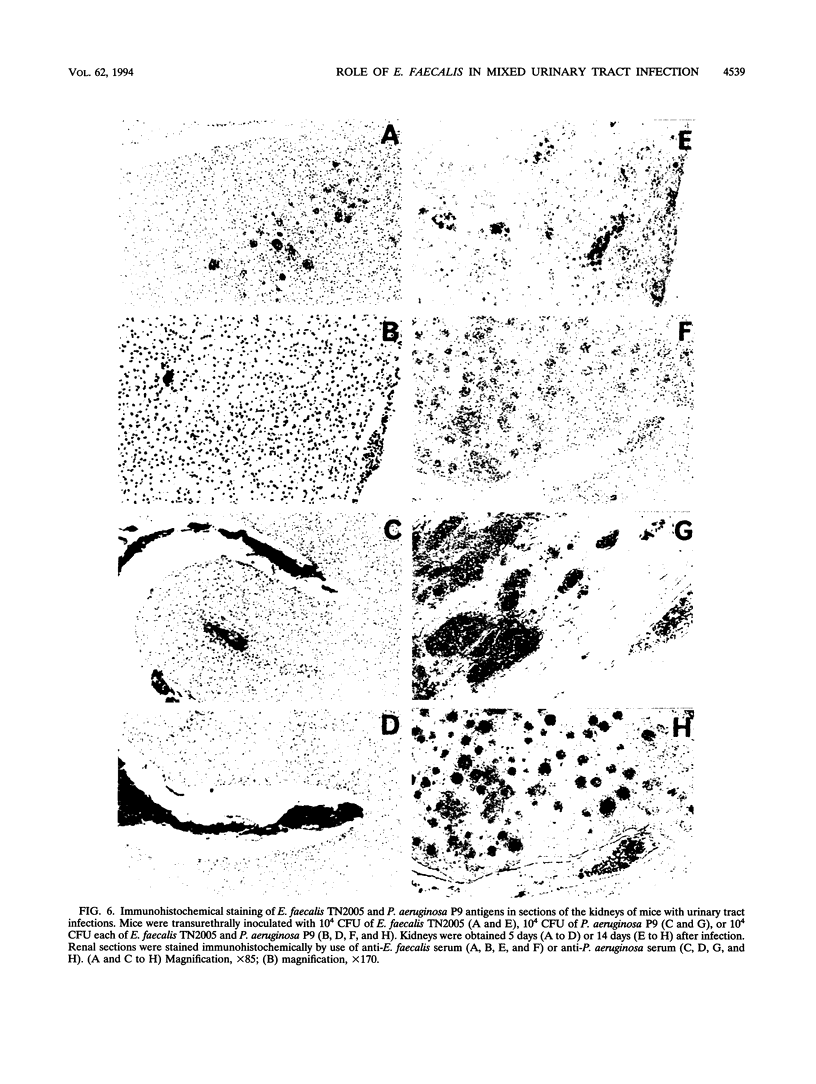
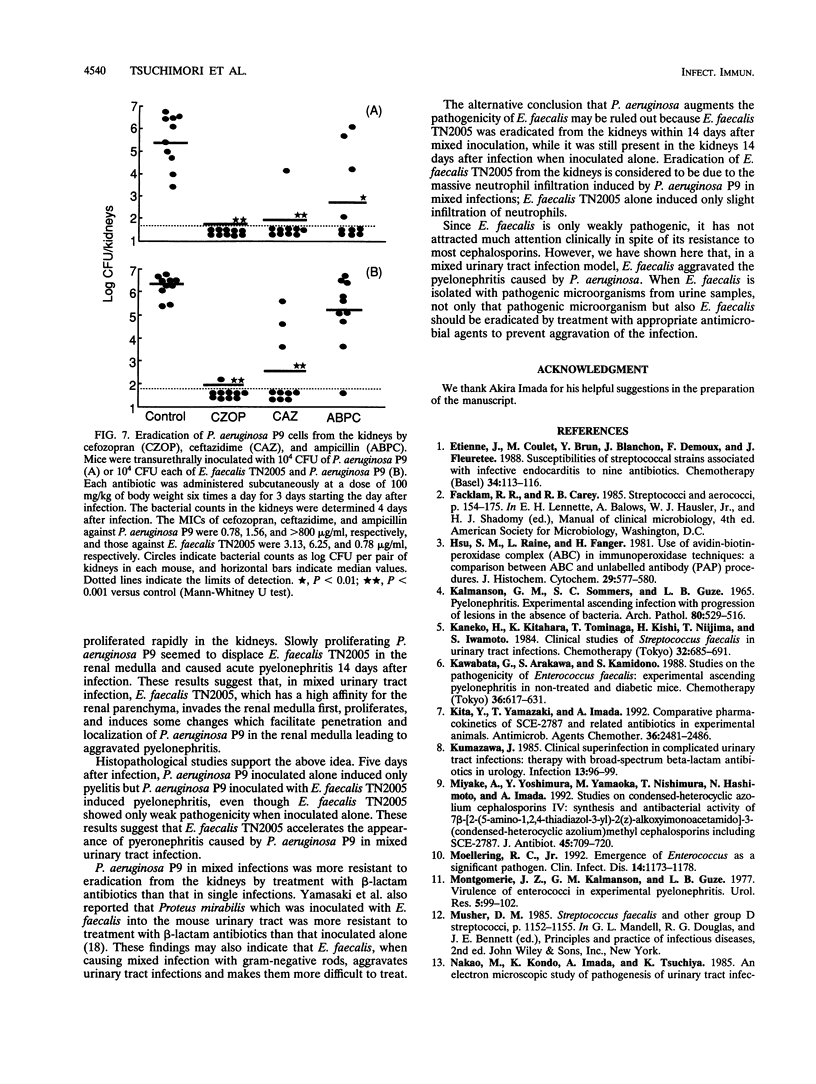
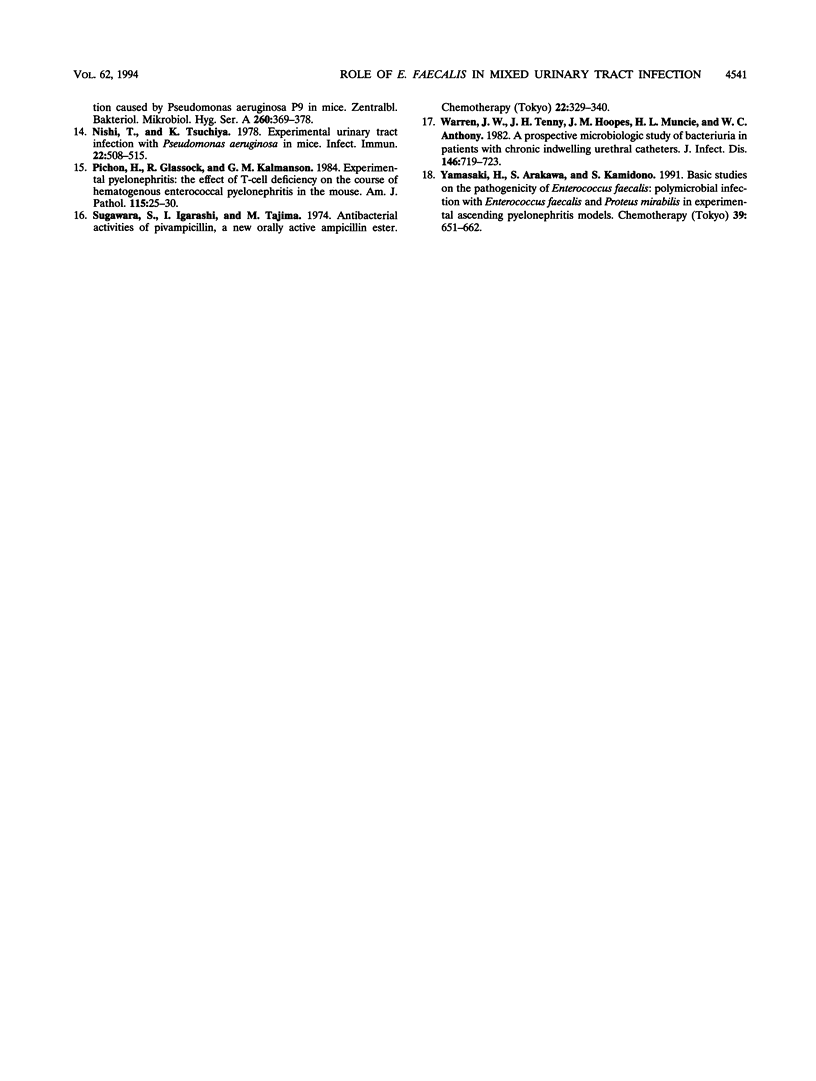
Images in this article
Selected References
These references are in PubMed. This may not be the complete list of references from this article.
- Etienne J., Coulet M., Brun Y., Blanchon J. F., Demoux F., Fleurette J. Susceptibilities of streptococcal strains associated with infective endocarditis to nine antibiotics. Chemotherapy. 1988;34(2):113–116. doi: 10.1159/000238557. [DOI] [PubMed] [Google Scholar]
- Hsu S. M., Raine L., Fanger H. Use of avidin-biotin-peroxidase complex (ABC) in immunoperoxidase techniques: a comparison between ABC and unlabeled antibody (PAP) procedures. J Histochem Cytochem. 1981 Apr;29(4):577–580. doi: 10.1177/29.4.6166661. [DOI] [PubMed] [Google Scholar]
- Kalmanson G. M., Sommers S. C., Guze L. B. Pyelonephritis. VII. Experimental ascending infection with progression of lesions in the absence of bacteria. Arch Pathol. 1965 Nov;80(5):509–516. [PubMed] [Google Scholar]
- Kita Y., Yamazaki T., Imada A. Comparative pharmacokinetics of SCE-2787 and related antibiotics in experimental animals. Antimicrob Agents Chemother. 1992 Nov;36(11):2481–2486. doi: 10.1128/aac.36.11.2481. [DOI] [PMC free article] [PubMed] [Google Scholar]
- Miyake A., Yoshimura Y., Yamaoka M., Nishimura T., Hashimoto N., Imada A. Studies on condensed-heterocyclic azolium cephalosporins. IV. Synthesis and antibacterial activity of 7 beta-[2-(5-amino-1,2,4-thiadiazol-3-yl)-2(Z)- alkoxyiminoacetamido]-3-(condensed-heterocyclic azolium)methyl cephalosporins including SCE-2787. J Antibiot (Tokyo) 1992 May;45(5):709–720. doi: 10.7164/antibiotics.45.709. [DOI] [PubMed] [Google Scholar]
- Moellering R. C., Jr Emergence of Enterococcus as a significant pathogen. Clin Infect Dis. 1992 Jun;14(6):1173–1176. doi: 10.1093/clinids/14.6.1173. [DOI] [PubMed] [Google Scholar]
- Montgomerie J. Z., Kalmanson G. M., Guze L. B. Virulence of enterococci in experimental pyelonephritis. Urol Res. 1977;5(3):99–102. doi: 10.1007/BF00256860. [DOI] [PubMed] [Google Scholar]
- Nakao M., Kondo M., Imada A., Tsuchiya K. An electron microscopic study of pathogenesis of urinary tract infection caused by Pseudomonas aeruginosa P 9 in mice. Zentralbl Bakteriol Mikrobiol Hyg A. 1985 Nov;260(3):369–378. doi: 10.1016/s0176-6724(85)80025-0. [DOI] [PubMed] [Google Scholar]
- Nishi T., Tsuchiya K. Experimental urinary tract infection with Pseudomonas aeruginosa in mice. Infect Immun. 1978 Nov;22(2):508–515. doi: 10.1128/iai.22.2.508-515.1978. [DOI] [PMC free article] [PubMed] [Google Scholar]
- Pitchon H., Glassock R., Kalmanson G. M., Guze L. B. Experimental pyelonephritis. The effect of T-cell deficiency on the course of hematogenous enterococcal pyelonephritis in the mouse. Am J Pathol. 1984 Apr;115(1):25–30. [PMC free article] [PubMed] [Google Scholar]
- Warren J. W., Tenney J. H., Hoopes J. M., Muncie H. L., Anthony W. C. A prospective microbiologic study of bacteriuria in patients with chronic indwelling urethral catheters. J Infect Dis. 1982 Dec;146(6):719–723. doi: 10.1093/infdis/146.6.719. [DOI] [PubMed] [Google Scholar]



